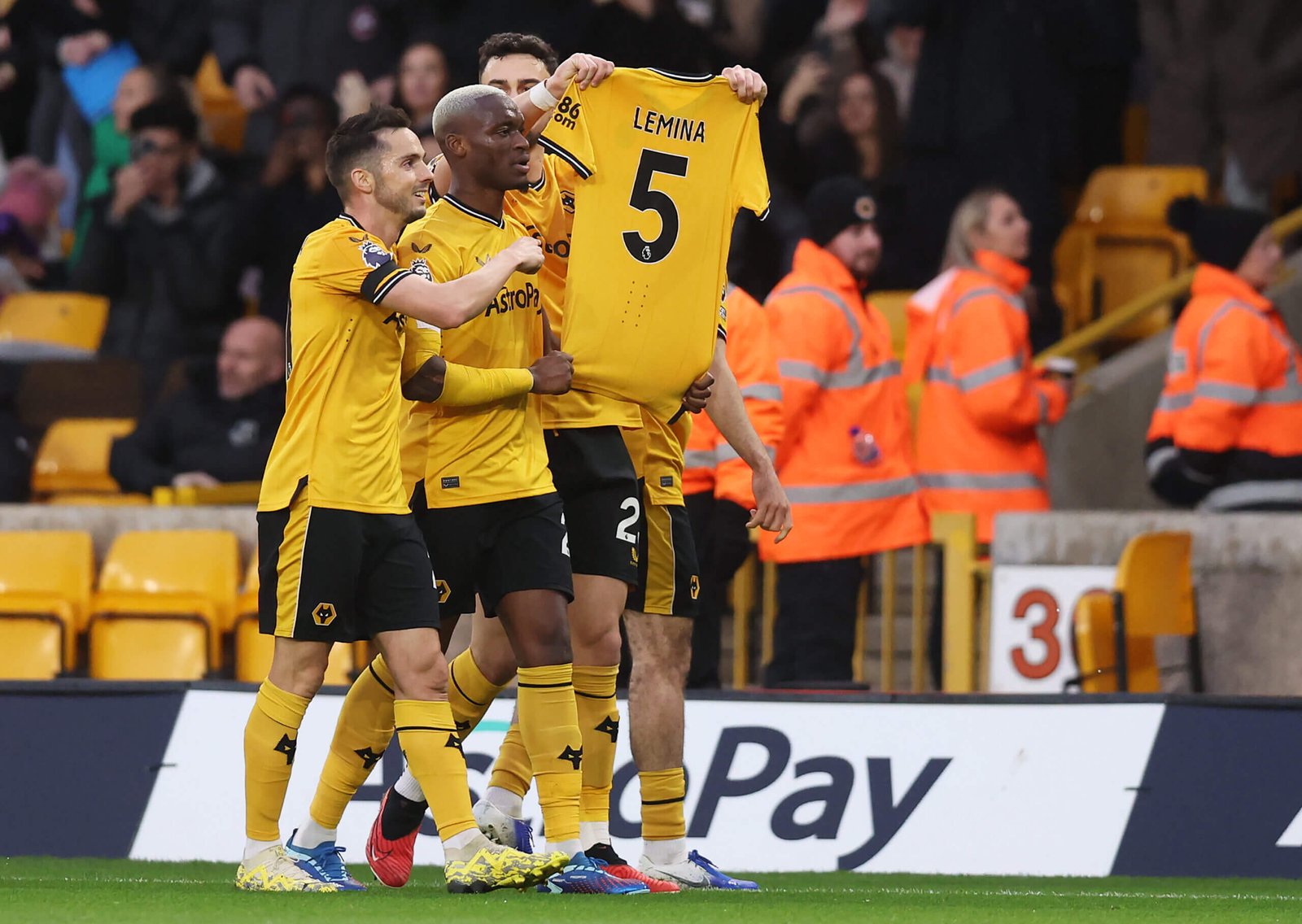What would you have on the back of your shirt if you played in the Premier League? It’s a question that has to be considered.
After Wolverhampton Wanderers scored a slick counter-attacking goal against Newcastle United earlier this month, scorer Mario Lemina celebrated with various dance moves.
Your eyes might have been drawn to his shirt. Instead of saying ‘LEMINA 5’, it reads ‘MARIO JR. 5’.
This is not uncommon. We have seen nicknames and first names before. Javier Hernandez was ‘Chicharito’. Virgil van Dijk opted for his first name. In La Liga, Vinicius Jr is down as Vini Jr.
But what are the Premier League’s rules surrounding this, who approves names and what are some of the stories behind these?
When did names first appear on shirts?
Names first appeared on Premier League shirts in the 1993-94 season, the second season of the revamped English top flight.
Premier League shirts with numbers and no names, as they were in the 1992-93 season (Anton Want/Allsport via Getty Images)
This was also the first time starting line-ups did not have to be numbered one to 11 and instead could follow consistent squad numbers from game to game. Before that, players ran out in a number that corresponded to their position — and there was no name on the back of shirts.
So what are the Premier League’s rules when it comes to names on shirts?
The Premier League’s Rule M.7 states that a player’s number should be below their surname or another name that has been approved in writing by the Premier League board.
Names outside of surnames can be used when a player wants a name they have worn for a former club’s first team or at national level. Players can also go with another name if they have personal reasons as to why they don’t want to wear their surname.
In the case of double-barrelled names — such as Taylor Harwood-Bellis — or a surname with multiple names, the player decides whether they want to include their full name or choose either to go on the shirt.
No special characters can be used, as all names must be written using the Latin alphabet. This means no ‘@’ X or Instagram handles are permitted.
A player’s name, nickname and shirt number are all included in “Player Image” rights, from which they may profit outside of their usual wage. Think ‘CR7’.
Examples and their reasons…
For Lemina, he wanted ‘Mario Jr.’ to pay tribute to his late father, also named Mario Lemina. The change took place after his brother, Noha, joined the club on loan in 2024.
Wolves head of kit and equipment Sam Perrin told the club’s media: “When we signed his brother Noha, Mario asked about the shirt situation and whether his brother could take the name ‘LEMINA’, which he’s had at every other club.
“He then also asked about changing his name and requested ‘MARIO JR.’ so he could honour his dad.
“We spoke to the Premier League, who ran it past their board, and we explained the circumstances – we’re a big family club and we explained why we wanted to do it. They understood the reason and it got cleared. Now every week on the pitch Mario can represent his father.”

Lemina used to wear a shirt with his full surname on (Nathan Stirk/Getty Images)
Generally, in the case of siblings, and or those with the same surname on the same team, one player wears the surname while the other wears their first name initial in front of the surname. For example, Andre Ayew donned ‘A. AYEW 19’ when he signed for Swansea in 2018 to play alongside brother Jordan.
Bobby Decordova-Reid, who joined Leicester City on a free transfer in the summer from Fulham, legally changed his surname from Reid to Decordova-Reid when he was at Cardiff City. This was to pay tribute to his mother’s last name.
For everyone asking about the name change on the back of my shirt😂… Decordova is my mums surname and wanted represent her after the hard work she’s done for me 👌🏾❤️
— Bobby Decordova-Reid (@bobbyreid93) August 18, 2018
Other high profile cases include Van Dijk and Dele Alli, who both opted for first names on the back of their shirts for personal reasons relating to relationships with their fathers.
Mexico’s all-time top scorer Hernandez had one of the most famous nicknames — ‘Chicharito’. He wore the moniker on his shirt during his years at Manchester United (2010-2015) and West Ham (2017-19). The name means ‘little pea’ in Spanish and refers to his father, Javier Hernandez Gutierrez, who had little green eyes.
After joining City in 2011, Sergio Aguero was approved to wear ‘Kun Aguero’, an ode to Japanese anime series ‘Kum-Kum’ which he used to watch and was said to have looked like the main character. His approval came under the fact that he wore it previously at Atletico Madrid.
And former Aston Villa and Egypt winger Trezeguet — whose actual name is Mahmoud Ahmed Ibrahim Hassan — earned his nickname after being compared to the legendary French striker David by his former youth coach.
A more recent example comes from Germany this season where Borussia Dortmund’s Jamie Gittens adjusted his shirt name. The England Under-21 and former Manchester City winger told the Dortmund website his father had suggested he shorten his name from Bynoe-Gittens. “Both are my father’s names, but he said he thinks it’s better if I’m just called Gittens because it’s shorter. Most people know him as Gittens, so in the future, I’ll only wear Gittens,” he said. Following in the footsteps of fellow Englishmen Jude Bellingham and Jadon Sancho at the club, Gittens scored twice in Dortmund’s Champions League opener against Club Bruges last week.
(Top photos: Getty Images)
Read the full article here


